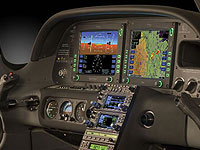Skepilot
Pre-takeoff checklist
A valid concern, but as a realistic GA risk factor it approaches statistical insignificance. In the most recent Nall Report (26th edition) there were 147 fatal pilot-related accidents from 2014. As a cause, pilot incapacitation was thrown into the "other" category and was as responsible for three of those fatal accidents. Most, but not all, of the work being done to reduce accidents right now -- work I volunteer my time towards in fact -- are in the categories of LOC-I/G, fuel management, and VFR into IMC. An underlying theme to almost all of the accidents is ADM and risk management.
Yes, but I'm trying to determine my risks, which are different than for GA in general. At our experience and proficiency levels, I'm not worried too much about LOC-I/G, fuel management, and VFR into IMC or ADM. As I posted above, the one source I found showed 3 out of 1,000 accidents, (and 15 out of 1,000 fatal accidents), involve pilot incapacitation. I can't find the equivalent statistic for engine failures. I'm prepared to accept that it's a higher risk factor, I just haven't found it yet. I've found engine failure rates per 100,000 hours, but that doesn't help unless I can also find pilot incapacitation rate in terms of hours. I did find one source that showed that 16% of GA accidents are due to mechanical failure, and 70% of those are engine/prop related. If that's accurate, that would mean 11% of GA accidents are engine failure related, which is substantially higher than pilot incapacitation. That was my intuition, but I needed data to present to my wife when she says, "What if something happens to you!?"
This seems pretty bad.
Sure, but I've got news for you, if you have a mid-air and lose a wing in your twin, you won't fare much better. In fact, the other plane involved in this mid-air also crashed and killed all the occupants. Are you saying you'd rather not have a parachute for all the times that it would save you, because in this one situation you would want to die faster without it? Come on, this is a real flukey edge case here, not the most probable scenario.
I realize I may be in the minority here but based on my background, my risk tolerance, and my experience, I will only fly those missions in a multiengine aircraft.
Thanks for the discussion and I hope my comments are a semi-useful data point for you.
Sure thing, good discussion!

 Plus it would feed my radial engine fancy! Owner of the flight school where I trained had one, but didn't fly it -- too expensive. I can't afford the price of oil it leaks out, much less the gas or MX!
Plus it would feed my radial engine fancy! Owner of the flight school where I trained had one, but didn't fly it -- too expensive. I can't afford the price of oil it leaks out, much less the gas or MX! Or maybe it will...
Or maybe it will...





